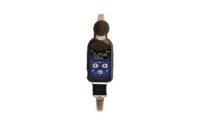A VP of Customer Support wanted to improve the timeliness at which customer questions and system errors were being addressed. After thinking it over, the VP decided a fitting key performance indicator (KPI) would be to task his/her reports with reducing the average call time per customer support call. The thought being that if the average customer call time is reduced, then the customers are getting their questions addressed more quickly, and even better, the team can field more customer questions in a day! Furthermore, to drive the incentive to reach the target, the customer support reps and their managers will be bonused on the achievement of a 10% year over year reduction in the average customer support call time. Let the improvements begin!
Target vs measure
This is a classic example of a measure, reducing average customer support call time, becoming a target. Even if the goal of a 10% reduction in average customer call time is met, the misappropriation of a measure as a target will only lead to quantitative success, not an overall improvement in customer support.
Keeping this example in mind you might be asking yourself, what is the difference between a target and a measure? Moreover, why is it important to distinguish between the two? At the beginning of every calendar year our teams get together and discuss goals. Our goal meetings are often conducted with the best intentions; however, we often miss our mark by confounding targets and measures. This common mistake is outlined in “Goodhart’s law,” named after economist Charles Goodhart. The Goodhart law can be expressed simply as: when a measure becomes a target, it ceases to be a good measure. A target can be thought of as the overall objective that we are striving to achieve, whereas a measure is the metric that we track to indicate if we are on our way to achieving our target. To illustrate the importance of picking the correct measures and targets it is helpful to think of a personal health initiative. Weight loss is normally a measure of good health. However, when weight loss is seen as both the target and the measure by which we assess our success, we create a perverse incentive structure. This can be more detrimental to our health than beneficial. If weight loss is both our measure and our target, then we create habits that help us lower your weight at the expense of our overall personal health. For example, to meet our weight loss target we could dehydrate ourselves before weigh-ins to reduce water weight, eat the same bad food just in lower quantities to cut calories, refrain from lifting weights to drop muscle mass, or cut out healthy foods that are higher in calorie count for low calorie unhealthy substitute. What happens if we change the target of our personal health initiative so that our target is lowering our cholesterol? When we chose a target that is directly correlated to better overall health it creates the right incentive. Furthermore, since the target is dependent on other factors, we are forced to implement intermediary measures that can be tracked to help us understand if we are moving positively towards our target. For example, to lower our cholesterol we could track our weight loss, exercise hours, and types of cholesterol reducing foods consumed.
Forest for the trees
Historically in EHS, our annual goals /KPIs often focus on a year over year reduction or increase in things like: recordables, claim costs, lost days, restricted days, or audits. However, like in the examples above, when we use these indicators as both our measure and target, we run the risk of creating the wrong incentives. Furthermore, tracking any of the above-mentioned indicators on their own would not give us an insight into the overall health of our safety program. Let’s look at a common lagging indicator target, OSHA Recordables. As many of us have probably experienced, OSHA Recordables can reduce year over year without a measurable improvement in the overall safety program. In fact, putting laser focus on OSHA Recordables may even suppress injury reporting or put our initial post incident focus on treatment guidelines rather than prioritizing the underlying cause of the incident. Likewise, we need to be just as careful choosing our targets and measures when we are looking at leading indicators. For example, a common leading indicator target is the total number of inspections, audits, or observations completed in a year. Again, if this is both our target and measure, the purpose of our inspections simply becomes to do inspections. Like the weight loss and customer support examples above, when the quantitative measure becomes the marker of success it loses its effectiveness. Workplace safety, like personal health, is a complex system and when metrics that we measure become our targets we tend to miss the forest for the trees. We become hyper focused on reducing or increasing the quantity of a thing and in doing so we lose sight of how these measures apply to our greater objective of making the workplace safer for our employees. Identifying a target that creates the correct incentive and directly correlates with an improvement in our safety management systems is critical to meaningful change. We could change our target from a reduction in OSHA Recordables to an increase in our safety culture survey score. This target provides a better indicator of the overall health of our safety program. In turn, we can focus on measures that drive us to our target. For example, we could track safety committee meeting attendance, employee safety recommendations, number and timeliness of action items closed out, average time to report an incident, number of near misses reported, employee participation in behavior-based safety inspections, training completion, etc. The idea being that even though these measures do not directly measure the safety culture score, they are intermediaries that give us a window into the attainment of our target. Since our new target is directly correlated to our overall objective, improving workplace safety for employees, we have the right incentives to track measures that drive us towards our goal.
We need to be careful not to fall into the trap of having our measures become targets. When this happens, it can lead to perverse incentives, manipulation, and an overall misappropriation of our focus. When we pick targets that align with our intended objective, we can track and quantify meaningful intermediary measures along the way. This will help us determine if we are making positive change in our safety management systems and heading towards the goal of eliminating death on the job by 2050.




